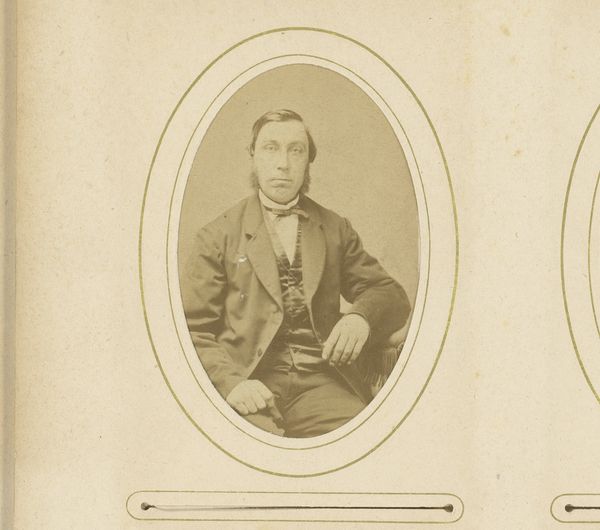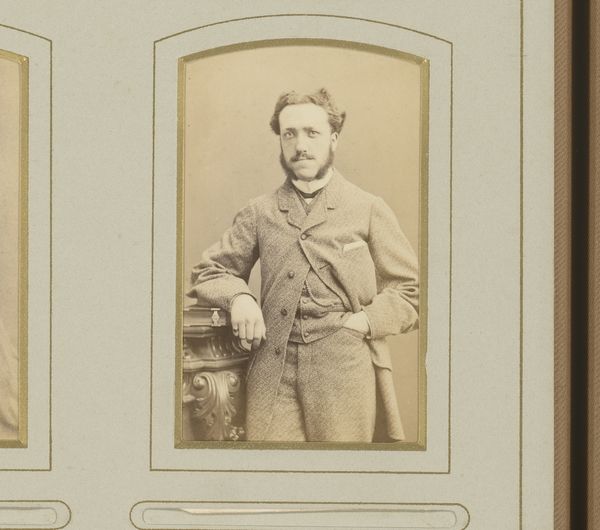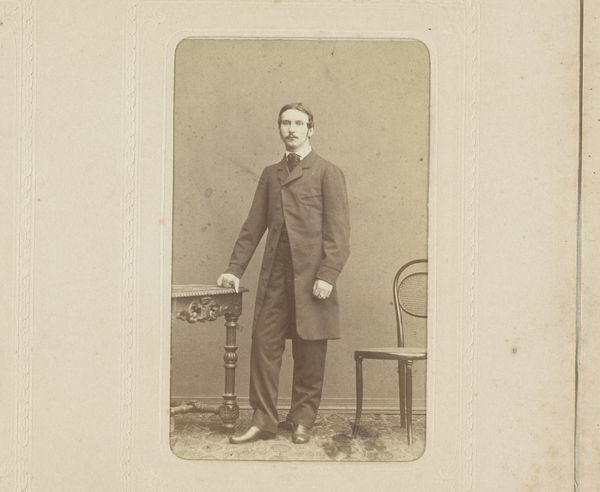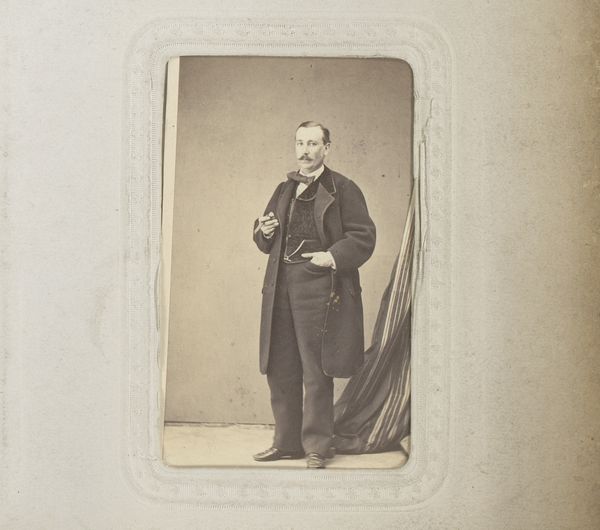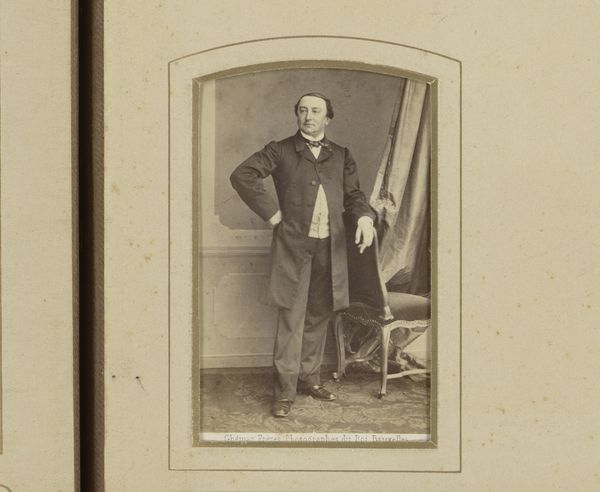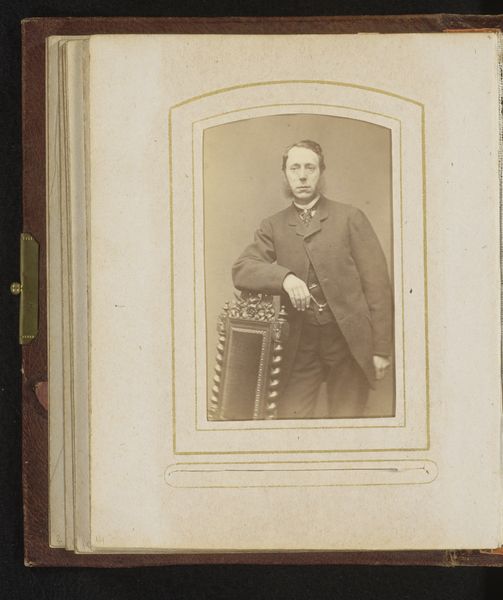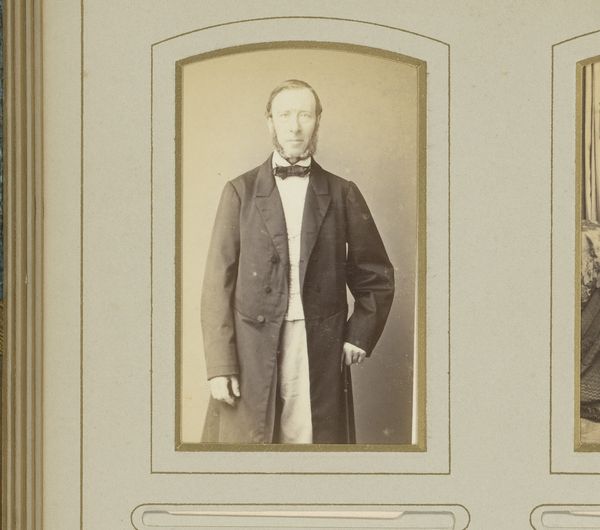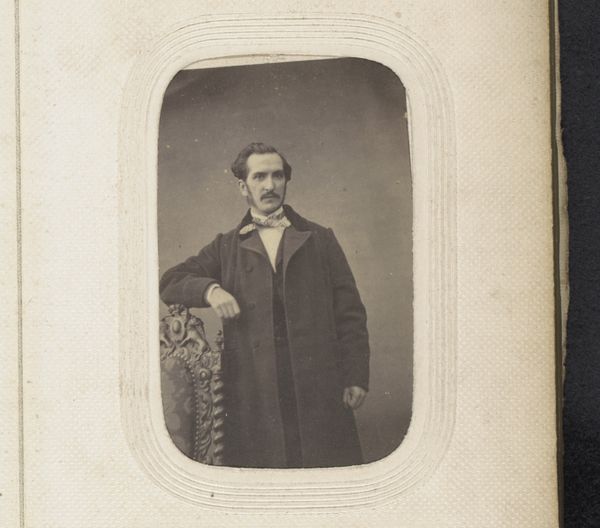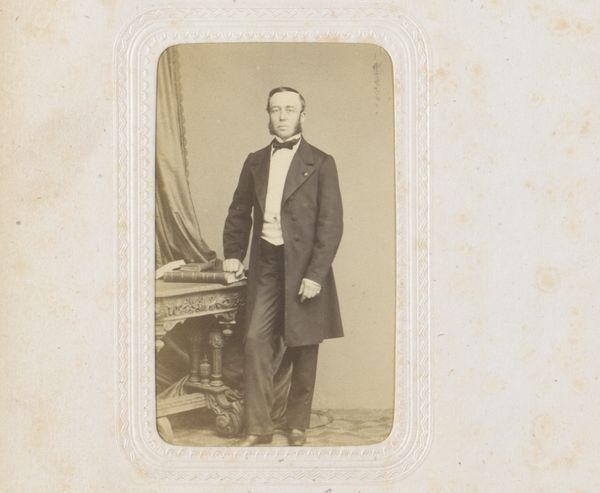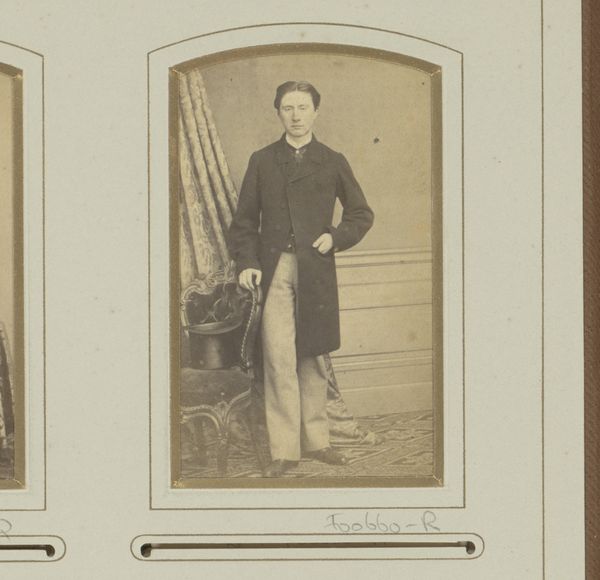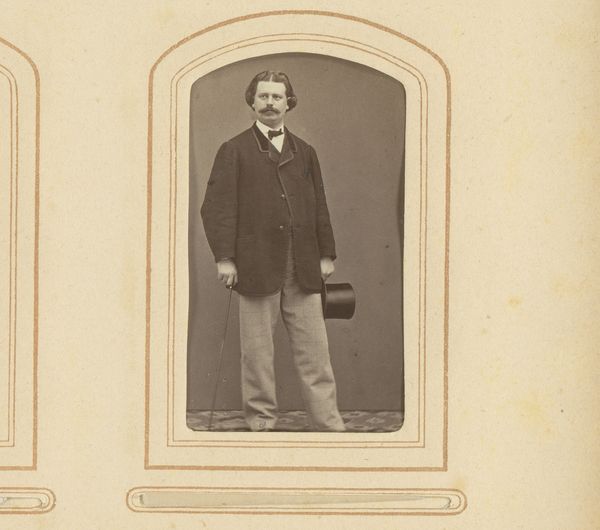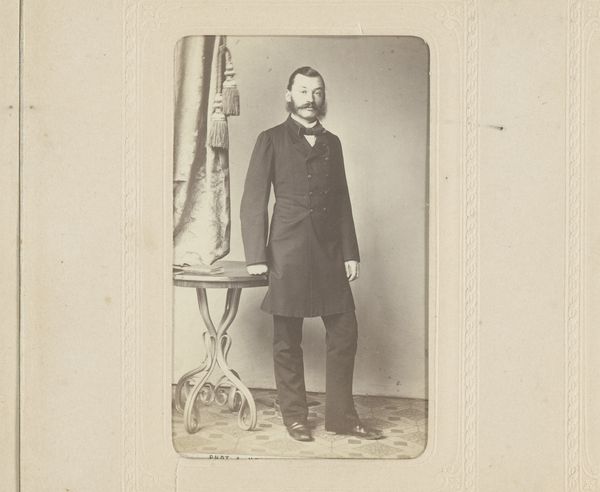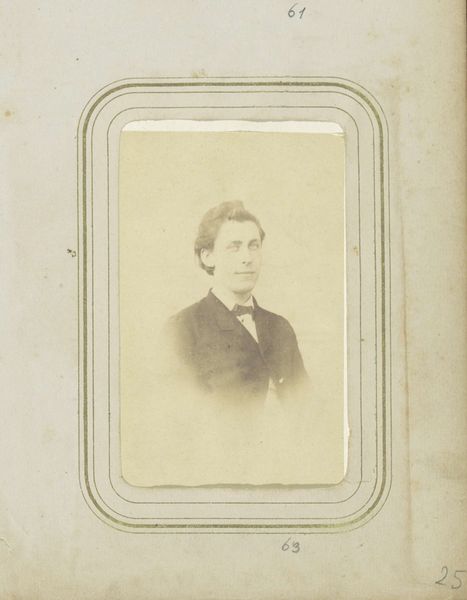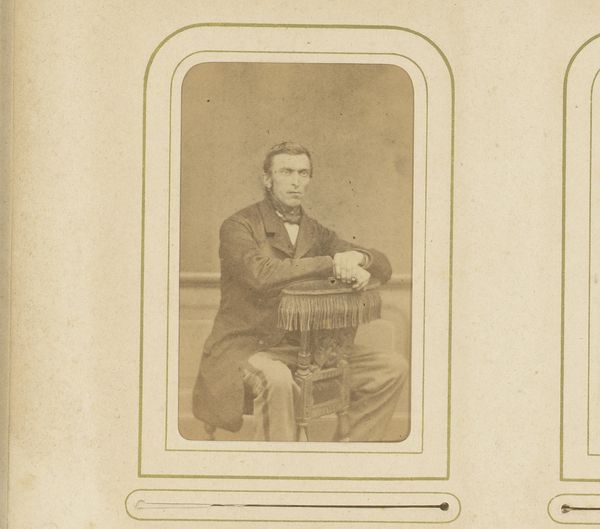
Portret van een staande man met snor en bakkebaarden 1850s - 1860s
0:00
0:00
daguerreotype, photography
#
aged paper
#
16_19th-century
#
vintage
#
photo restoration
#
parchment
#
daguerreotype
#
archive photography
#
photography
#
historical photography
#
historical fashion
#
old-timey
#
yellow element
#
19th century
#
genre-painting
#
realism
Dimensions: height 82 mm, width 50 mm
Copyright: Rijks Museum: Open Domain
Curator: Here we have a rather intriguing portrait, dating from the 1850s or 60s. It's a daguerreotype, a very early photographic process, entitled "Portret van een staande man met snor en bakkebaarden"—or "Portrait of a Standing Man with Moustache and Sideburns"—attributed to Hermanus Philippus Jacobus Schuiten, part of the Rijksmuseum collection. Editor: What strikes me first is the almost sepia wash of history, the delicate aging around the edges. He looks a little melancholy, perhaps? As if burdened by the weight of that impressive moustache and those… exuberant sideburns! Curator: Indeed! Daguerreotypes are unique objects, one-of-a-kind. This fellow, posed so formally, becomes a window into a specific historical moment. The rise of photography democratized portraiture, suddenly, the middle classes, too, could claim their own immortalization! Editor: And suddenly everyone’s worried about how their sideburns look for all of eternity. Think of the pressure! Though I wonder what his story was, outside the suit and carefully chosen pose. I bet he had opinions about… I don't know... wallpaper. Curator: It’s tempting to create fictions. But in a way, the image *is* his story. He commissioned it, selected his attire, probably chose the angle, all signalling his aspirations and status within society. The detail – observe the watch chain! Editor: I see it, yes. Such a tiny detail and still it evokes an entire social fabric. He definitely wanted to appear a man of substance. All that’s missing is a dramatic reading of some earnest poetry. Curator: Precisely. Daguerreotypes also had a very particular social function. They were often given as gifts, tokens of affection and remembrance. He may have offered this portrait to his beloved! Editor: Ah, now we’re back to wallpaper…or maybe his collection of exotic ferns! Either way, this little glimpse through the photochemical portal reminds us that behind every antique portrait there’s a soul just as complex as our own. Curator: Yes, the photograph offered then, as now, both record and symbol; and looking closely, we glimpse at once the tangible past, and our inevitable relationship to it.
Comments
No comments
Be the first to comment and join the conversation on the ultimate creative platform.
